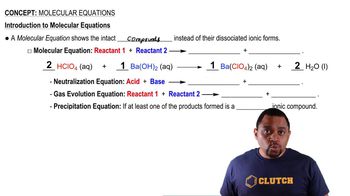Draw the condensed structural formulas for a and b and line-angle formulas for c and d:
c. 3-bromopentanoic acid
 Verified step by step guidance
Verified step by step guidance Verified video answer for a similar problem:
Verified video answer for a similar problem:



 :55m
:55mMaster IUPAC Rules for Naming Carboxylic Acids Concept 1 with a bite sized video explanation from Jules
Start learning